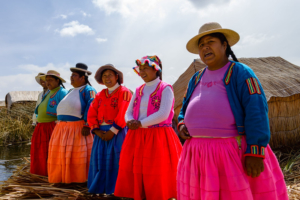8 Facts About Women’s Poverty in Peru

Peru has gradually reduced poverty over the past decade. Currently, approximately 6 million Peruvians live under the national poverty line in comparison to 16 million in 2004. This is remarkable progress in tackling poverty in Peru. Around 20.5% of Peru’s population lives in poverty nonetheless. Most of them are indigenous Quechua and Aymara communities living in the rural Sierra region. Despite their essential role in the economy, women bear the greatest burdens of extreme poverty in Peru. Here are eight facts about women’s poverty in Peru.
8 Facts About Women’s Poverty in Peru
- Women account for the majority of the population living in extreme poverty. In the Piura, Cajamarca, La Libertad and Apurímac districts, extreme poverty affects 25.7% of women. This is over three times the national average.
- In 2020, Peru scored 0.65 in the gender gap index, meaning that women are 35% less likely to have economic equality with men. In fact, 30.4% of women in Peru receive no personal income. Women who do receive personal income still make 30% less per month than men. Fortunately, Peru passed Law No. 30709 in 2017, prohibiting pay discrimination by gender. On July 1, 2019, The National Superintendency of Labor Inspection put the law into effect.
- Women are essential to Peru’s economy. The average rural woman accounts for 80% of her family’s labor force, working in agriculture, livestock and traditional household care. Women’s underpaid and underrepresented labor allows household men to search for temporary work.
- Women hold few influential roles in the workforce and politics, due to Peru’s traditional views about the role of women. This means women face higher rates of unemployment and poverty.
- Girls and women suffer from higher illiteracy rates than boys and men. Illiteracy among women in rural areas is 33.7% in comparison to 10.9% of men. In urban areas, where 7.4% of women and 2.4% of men are illiterate, women still face unequal opportunities in education. Organizations like Peruvian Hearts and the Sacred Valley Project give girls, especially those in rural areas, opportunities for further education in the form of scholarships, tuition and boarding schools.
- Peruvian women and girls often face violence and discrimination. Between 2009 and 2015, domestic violence and gender-based crimes killed more than 700 women. In 2006, 69% of women reported that they had suffered physical violence. These reports were higher in rural areas. In 2015, Peru adopted Law No. 30364 aiming to eradicate all forms of violence against women and family members. Over time, the implementation of Law No. 30364 has improved, leading to the creation of a Gender Justice Commission composed of women judges. Reporting domestic violence is now easier and safer. Groups like Ni Una Menos raise awareness about violence against Peruvian women. Last year, it organized a protest in Lima to demand justice and government action for victims of gender violence.
- Peruvian women face limited access to reproductive and maternal healthcare. Choices regarding birth control are slim, and resources are often hard to find or too expensive. The fight for reproductive rights is ongoing. In 2014, Peru issued national guidelines for legal abortions in the case of sexual assault. Therapeutic abortion has been legal since 1924, however, access was not secure until 2014. Increased spending on reproductive healthcare over the past decade has improved access to birth control and other contraceptives. Organizations in Peru like PROMSEX promote sexual health and reproductive rights through political advocacy.
- Environmental challenges impact women the most in Peru. Resources like clean water, energy and food are scarcer in rural areas of Peru. Since women secure these resources, they bear the pressures of environmental challenges. Taxing jobs like collecting firewood and gathering clean water are becoming even more difficult as resources become scarce. These burdens make families vulnerable, forcing women to put family before health. Additionally, women’s lack of representation in government denies them information and resources that mitigate the effects of climate change.
Hope for the Future
Gender inequality worsens women’s poverty in Peru. Recent legislation and activism have begun to bridge this gap and focus on women’s rights. For example, political representation for women is near 30% and growing. Economic equality is also growing thanks to Law No. 30609 that prohibits pay discrimination between genders. Additionally, reforms to domestic violence services have reduced crime against women in Peru.
Meanwhile, women’s rights organizations like Womankind Worldwide are partnering with Peruvian organization FEPROMU in efforts to educate women and develop leadership skills. The organizations Women’s Empowerment Coalition and Awamaki partnered in 2019 to build an artisan center in Huilloc. The women’s association can now weave and make textiles and train women for leadership.
Government reform and the activism of women’s organizations have allowed helped the women of Peru to climb toward gender equality. This progress should hopefully lessen women’s poverty in Peru.
– Dalton Dunning
Photo: Flickr
